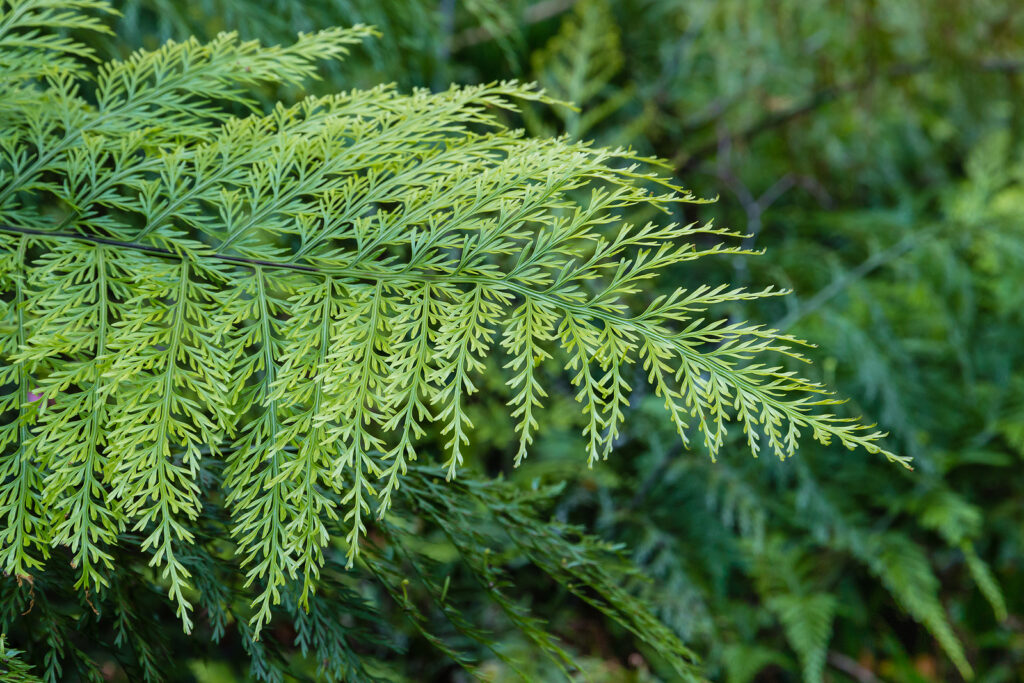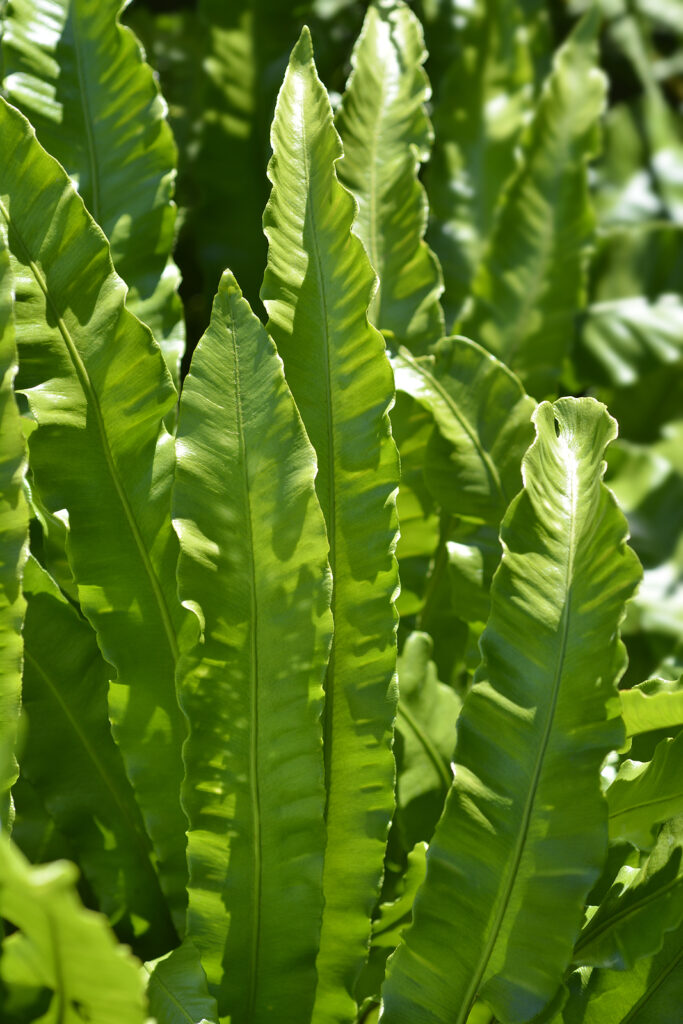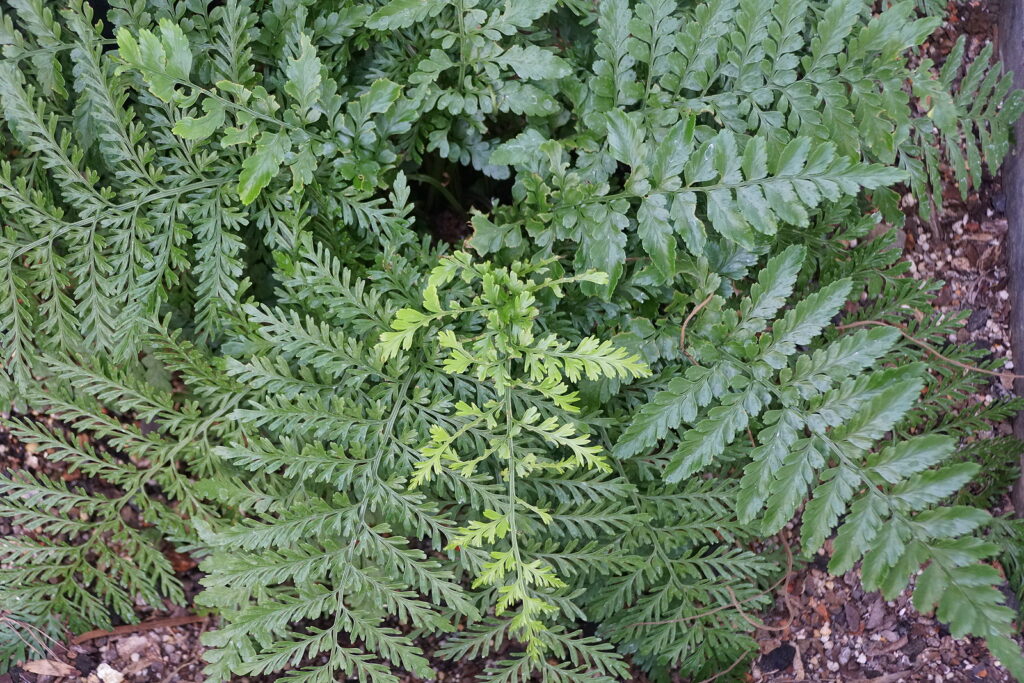Asplenium is a genus of evergreen ferns that are best known for the tufts of long fonds that often overlap to form a “nest”–thus the common name bird’s nest fern. Many Asplenium species also produce plantlets along their fronds; the plantlets can be separated and planted–thus the common name mother fern.
Asplenium ferns grow from creeping rhizomes. Asplenium are upright green ferns that grow to about 24 inches (60cm) tall. The fronds arch outward from a central growing point. The fronds can be simple or compound, broad or finely textured.
Asplenium is a genus of more than 700 species. The genus includes both terrestrial and epiphytic ferns. Asplenium are found on all continents except Antarctica. Some can grow in temperate regions others are tropical. Several including Asplenium bulbiferum and A. nidus are popular houseplants.
Get to know Asplenium
- Plant type: Fern
- Growing zones and range: Zones 3 to 13 depending on the variety
- Optimal growing temperature: day, 68° to 75°F (20° to 24°C); night, 50° to 60°F (10° to 16°C).
- Height and width: 24-inch (61 cm) to 5 feet (1.5m) tall and wide depending on the variety.
- Foliage: Tufts of fronds grow from creeping rhizomes; fronds may be simple or pinnate to 4-pinnae; some have fronds overlapping to form a “nest” in which organic matter collects; sori are linear and usully run parallel to other form the midribs toward the marings of the fronds.
- Uses: Shade or fern garden, woodland garden, rock garden, wall crevices
- Common name: Bird’s nest fern, spleenwort
- Botanical name: Asplenium
- Family name: Polypodiaceae
- Origin: Found on all continents except Antarctica

Where to plant Asplenium
- Light outdoors: Grow Asplenium in partial shade.
- Light: Subdued light from northern exposure, year-round. Does well under artificial light, needing 14 to 16 light-hours daily.
- Soil outdoors: Grow in humus-rich, moist but well-draine soil with added grit
- Soil indoors: Fern mix, with good drainage.
When to plant Asplenium
- Set Asplenium outdoors in spring or autumn; avoid planting in hot weather.
Planting and spacing Asplenium
- Space Asplenium 24-inch (61 cm) to 5 feet (1.5m) apart depending on the variety.
How to water and feed Asplenium
- Water: Keep the soil constantly moist, not soggy. Avoid overwatering. Mist twice daily when growing Asplenium indoors, prefers humidity of 50% to 80%.
- Feeding: Every third or fourth watering during growing season, with mild liquid fertilizer. Use a half-strength balanced liquid fertilizer.

Asplenium care
- Plant may rest during fall and winter; water sparingly and withhold fertilizer during the rest period.
Growing Asplenium as a houseplant
- Provide Asplenium limited light, an average temperature during the day and a slightly cooler temperature at night.
- Mother fern (A. bulbiferum) requires high humidity and evenly moist soil; dry soil can cause brown spots to develop on the leaves.
- Bird’s nest fern (A. nidus) needs medium humidity and can tolerate soil kept slightly drier than for Mother fern.
Asplenium pests and diseases
- Mother fern (A. bulbiferum) and bird’s nest fern (A. nidus) may be damaged by aphids, foliar nematodes, mealybugs and scale insects. They are susceptible to root rot and to excess chlorine and fluoride in tap water.

Asplenium propagation
- Propagate by dividing the plant or from plantlets. Divide Asplenium in spring.
- Sow spores at 59 (15) for hardy species and at 70 (21) for tender speices.
Asplenium varieties to grow
- Asplenium bulbiferum, mother fern, hen-and-chicks fern. Grows 24-inch (61 cm) long graceful, light green fronds that are finely cut, occasionally reaching 4 feet in length; produces plantlets along its fronds that can be removed and planted—hence the plant’s common name. Hardy to 26°F/-3°C.
- A. daucifolium. Similar in appearance to A. bulbiferum, has smaller fronds more finely divied; grows to 24 inches tall.
- A. ebenoides, Scott’s spleenwort. Hybrid between A. platyneuron and A. rhizophyllum; small evergreen fern of variable appearance, with unevenly divided leaves.
- A. nidus, bird’s nest fern. Bowl-shaped rosette of shiny, simple fronds with a brown, hairlike center resembling a bird’s nest; broad, leathery, apple green, wavy-edged fronds are from 1 to 2 feet in length.
- A. platyneuron, Ebony spleenwort. Grows to 1 ½ ft. tall. Erect, once-divided dark green fronds have blackish-brown midribs.
- A. rhizophyllum (Camptosorus rhizophyllus), walking fern. Native to North America. Long, slender undivided fronds that taper to the tips; where they touch the soil, tips take root and produce new plantlets.
- A. scolopendrium (Phyllitis scolopendrium), Hart’s tongue fern. Strap-shaped leaves 9-18 inches long.; dwarf, crested, puckered, and forked varieties.
- A. trichomanes, maidenhair spleenwort. Delicate evergreen fern with narrow, bright green fronds 8 to 12 inches long; leaflets are round or nearly so, only ½ in. long.
……















